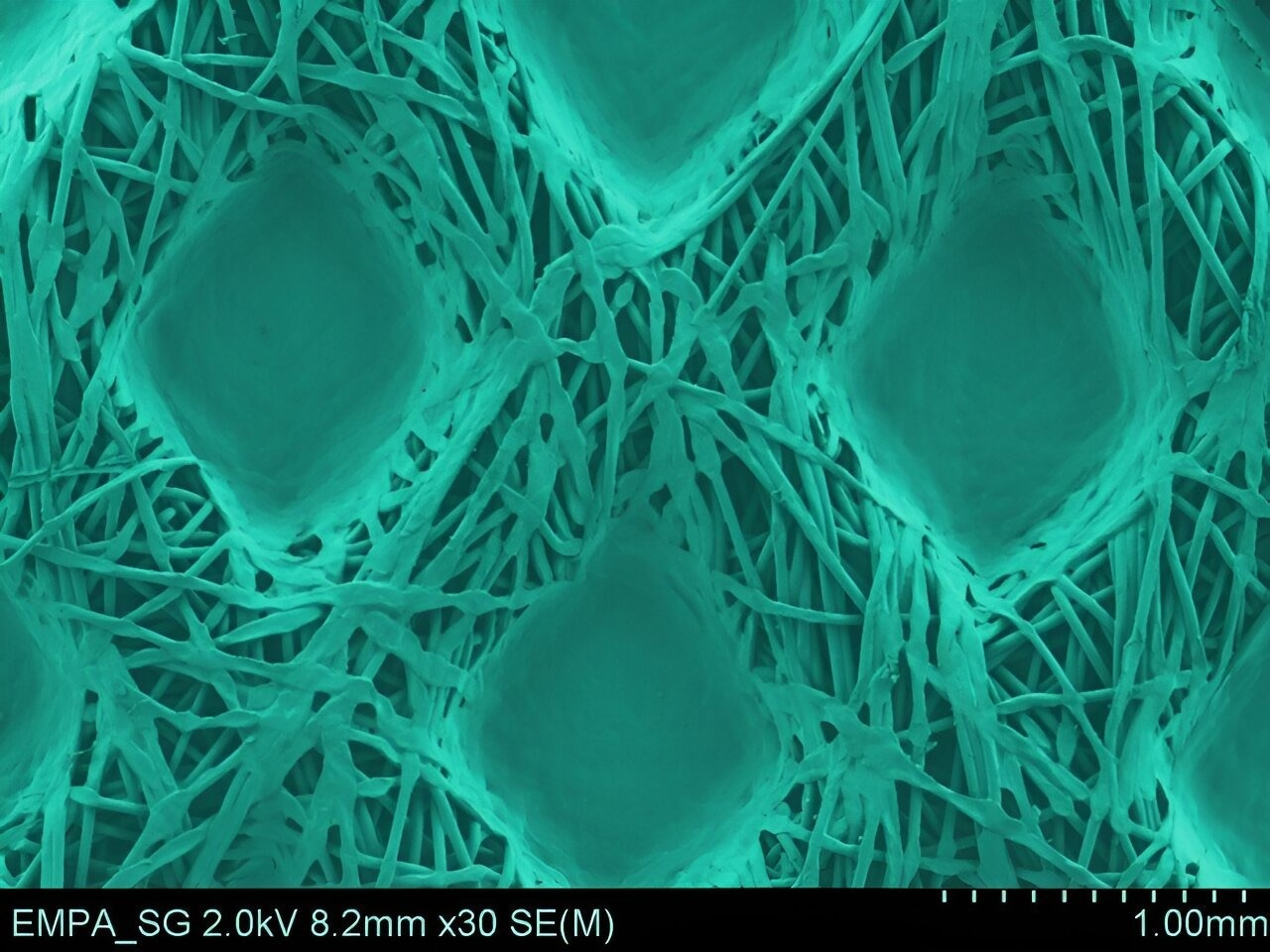Patients, visitors, and medical personnel in hospitals touch numerous surfaces on a daily basis. Pathogens such as hospital germs or viruses can be transported by door handles, railings, or elevator buttons. After contamination, smooth surfaces are relatively easy to clean. However, this is not as simple with porous structures like fabrics.
 The method developed at Empa resulted in an even distribution of the antimicrobial coating on textile fibers. Scanning electron microscopy, 30,000x magnification, colored. Image Credit: Empa, Swiss Federal Laboratories for Materials Science and Technology
The method developed at Empa resulted in an even distribution of the antimicrobial coating on textile fibers. Scanning electron microscopy, 30,000x magnification, colored. Image Credit: Empa, Swiss Federal Laboratories for Materials Science and Technology
Empa researchers, in collaboration with specialists from the Technical University of Berlin, Spiez Laboratory, and BASF, have set out to resolve this issue. Now, fabrics can be treated with a novel coating method that either kills or inhibits the growth of bacterial and viral diseases. In the future, the coated fabrics might be utilized in hospitals as antibacterial curtains between patient beds. The study was recently published in Scientific Reports.
Active for Months
We were looking for a process that reliably prevents germs from contaminating textiles that come into contact with a large number of people during use.
Peter Wick, Professor, Laboratory for Particles-Biology Interactions, Empa - Swiss Federal Laboratories for Materials Science and Technology
By doing this, chains of infection that, for instance, allow viral or multi-resistant germs to reside on hospital curtains and subsequently spread by people could be broken.
The researchers eventually devised a coating method that involved uniformly applying a disinfectant containing benzalkonium chloride on hospital curtains. The coating stuck steadily to the textile surface after optimizing parameters, including concentration, exposure time, processing pressure, and drying.
The first fabric samples’ antibacterial activity needed to be examined to demonstrate if the coated fabrics possessed germicidal properties.
Wick added, “The results of the laboratory tests were very encouraging.”
Staphylococci and pseudomonas bacteria, for example, were stopped from growing when the coated fabrics were cultured with the bacterial cultures of some common problem pathogens.
“The hospital germs were significantly reduced or even killed after just 10 minutes of exposure,” Wick further added.
Additionally, the coating demonstrated efficacy against viral infections, as evidenced by the coated fabric samples’ ability to eradicate over 99% of the viruses.
A further benefit is that even after several months of storage, the coatings held their effectiveness. Production can now be done using stock on hand. As per Wick, the novel procedure has the potential to promptly and securely treat various textiles, filters, or cleaning utensils with antimicrobials in the future, particularly during an outbreak.
Journal Reference:
Meier, P., et al. (2023) Quaternary ammonium-based coating of textiles is effective against bacteria and viruses with a low risk to human health. Scientific Reports. doi:10.1038/s41598-023-47707-3